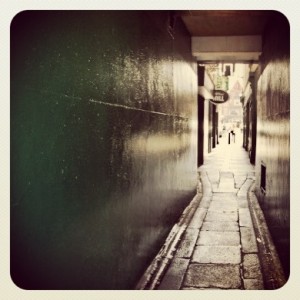Cities, it seems, grow from one of two methods. The first is by a system of organized construction and planned development – regimented blocks segmented by streets made parallel by a graphing compass and pencil. These kind of cities have either grown recently with the advent of improved technology, or were founded by ancient civilizations that enjoyed order in their settlements.
The other kind of city is the exact opposite: these are the cities that grew from towns and villages, where new neighborhoods and sections of streets have developed organically and freely. In these places it is the chaos of natural and unplanned growth over time that has decided the current shape of the once-tiny settlements.
Dublin is very much the latter. Starting as a Viking city in the 9th century, it has endured and expanded after multiple attempts by nature to seemingly end the city’s existence – plagues in the 14th and 17th centuries and attacks by native Irish clans have the population of Dublin in tatters, only to see it spring back and keep growing.
Dublin reminds me of what is essentially my hometown of Doylestown (I say ‘essentially’ due to the fact that I didn’t grow up there, but I’ve spent more than half my life in and around that area). In fact, it does more than remind me – they feel the same. Main Street winds its way up a hill, intersected by a multitude of smaller streets. While paved concrete is the main choice for roads, you can still find the older paths covered in cobblestones and bricks.
Interestingly enough (I’m sure the Irish can appreciate this fact), Doylestown started in the mid-18th century as the spot where William Doyle opened his tavern along the intersection of roads connecting major population centers of the day (most importantly, Philadelphia). From there, the town has grown over time in spurts and sprints, most notably after the American Civil War ended.
And, just like in Dublin, there’s the nooks and crannies between buildings that make up the alleyways and back streets that a local can navigate like the back of his hand. And its in these side streets, where the cars can’t reach and you’ve got to rely on your feet to make your way, that the real fun is. Sure, you can pick the bars on the main roads if you want, but getting off the beaten path is half the adventure. Take a left instead of a right, and suddenly you’ll find yourself in a whole new area – completely different shops and pubs wills stretch out in front of you, another treasure trove of new experiences.
But you can’t really get lost, it seems. A few more blind turns will, somehow, bring you back to a pub, shop, or street you already know, and by then you’ll have your bearings. Just follow your feet – they know the way.

